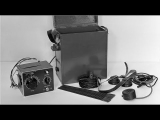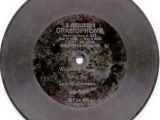Flanging.m4v
Flanging.m4v
Flanging was first created using analog tape recorders. Here’s signal from the mixing console was routed through two identical tape machines, meaning that both machines ran at the same speed, and had the same distance between the record and play heads. The signal was recorded on both recorders at the record heads and played back a fraction of a second later at the play heads. This produced a delay, but no flanging happened when the engineer put a thumb on the flange of the supply reel of one of the tape recorders. This is also how flanging gets its name. Lightly putting a thumb on the flange, momentarily slowed down the signal from that tape recorder and created time delays with signal from the machine that wasn’t slowed down. These time delays caused a phase cancellation that moved through the frequency spectrum and created that “jet plane” sound that people recognize as , flanging can be created using a signal processor or a plug-in and is much easier to do, but still has the sound of the original flanging using tape.















